- The House of Wisdom
- Posts
- Rome wasn't built in a day — but it was today.
Rome wasn't built in a day — but it was today.
Exactly 2,778 years ago...
Rome may not have been built in a day. But its legacy began today, exactly 2,778 years ago.
So in honor, here are its greatest architectural masterpieces...

1. The Pantheon (128AD)
The Pantheon is, without a doubt, Rome's best preserved monument. It is home to the largest unreinforced concrete dome in the world — even today, after almost 2,000 years since it was built.
The very secret to its impeccable condition lies in Roman concrete itself. When it rains, water seeps into the cracks and reacts with the calcium carbonate in the rock, plugging in any holes, virtually self-healing the dome.
The oldest door still in use today is in the Pantheon. It stands at 7.5 meters tall and 1910 years old but the design is so perfect that it takes just one hand to swing open and close.
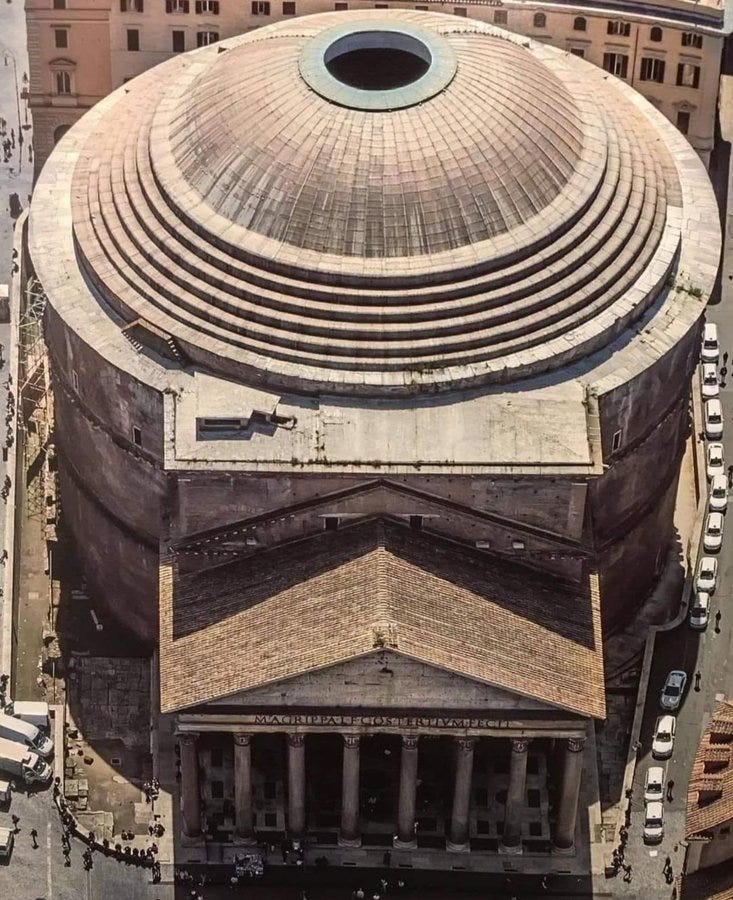
2. The Colosseum (80AD)
Originally built under Emperor Titus, it stands as the world's biggest amphitheater, with a seated capacity of no more than 50,000. The first games ran for 100 days straight, in honor of the completion of the great arena.
But what might be even more epic, is that the Romans occasionally flooded the Colosseum. This happened under the reign of Titus and Domitian to stage mock sea battles (known as naumachia).
More impressive above all, is the fact the the Romans managed to construct such a marvel in just a timespan of 8 years. Their skill in the ancient world was unmatched.
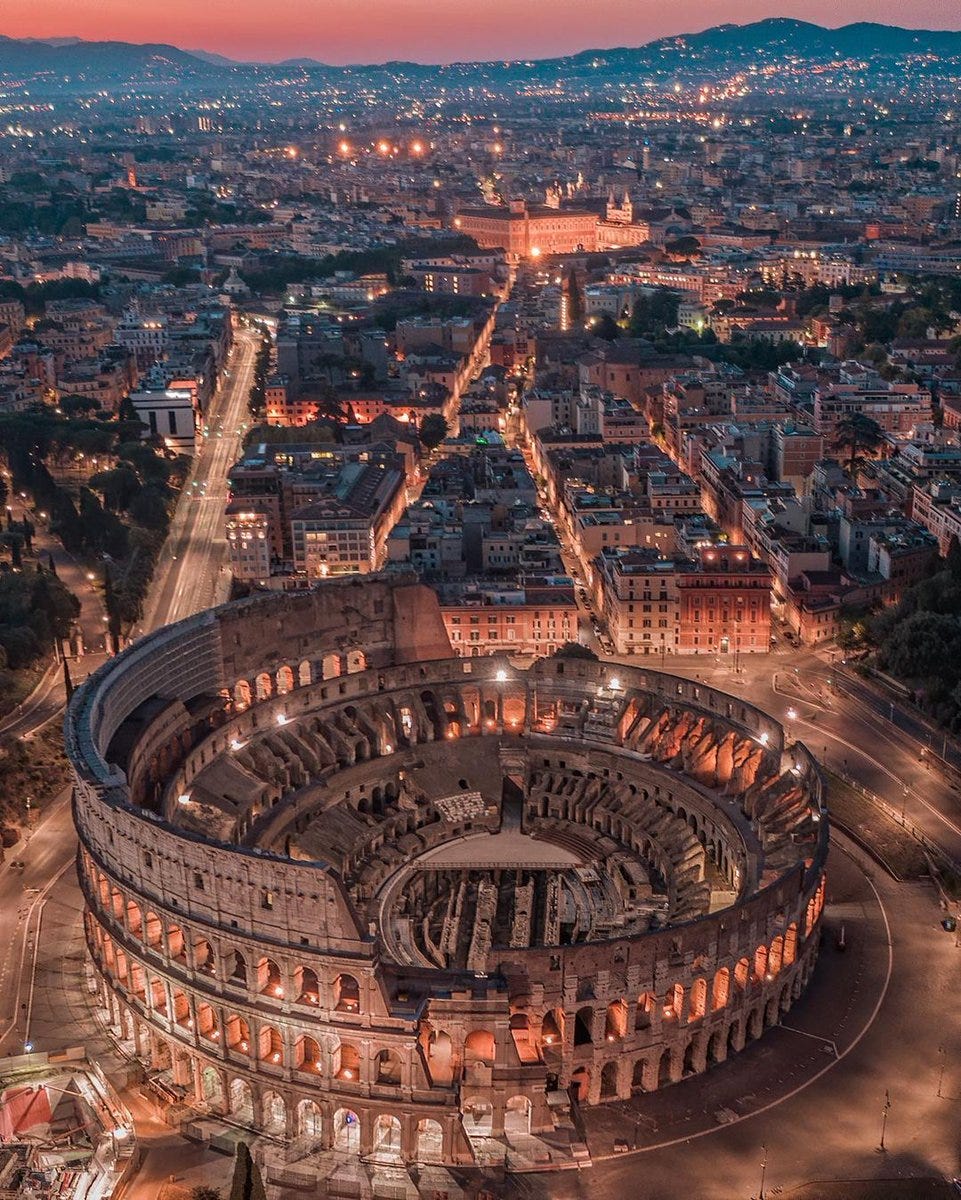
Photo by danieleragazziniv
3. Trevi Fountain (1732)
An incredible showcase of Baroque architecture built from the very same material as the Colosseum (travertine stone). The fountain façade features Neptune, the mythological Roman god of the sea, riding a chariot pulled by seahorses.
According to legend, those who throw a coin into the fountain secure themselves a swift and inevitable return to Rome.

An incredible historic square (once an ancient arena) that holds the keys to the Fountain of the Four Rivers. A baroque masterpiece made by none other than Bernini himself in the 17th century.

5. Palazzo Spada (1540)
A historic palace home to a famous baroque gallery, originally built for Cardinal Capodiferro. It is one of the earliest examples of an architectural trompe-l'oeil or "trick of the eye," featuring the Borromini Perspective.
The forced perspective illusion of Borromini's courtyard is a stunning masterpiece. Despite being only 8 meters length, the colonnade appears to be 30 meters long.

6. Vittoriano (1911)
A grand monument built in honor of the first king of unified Italy, Victor Emmanuel II, symbolizing Italian unity and patriotism. It is often referred to as the "typewriter" due to its white marble façade, much to the critique of the Italians..
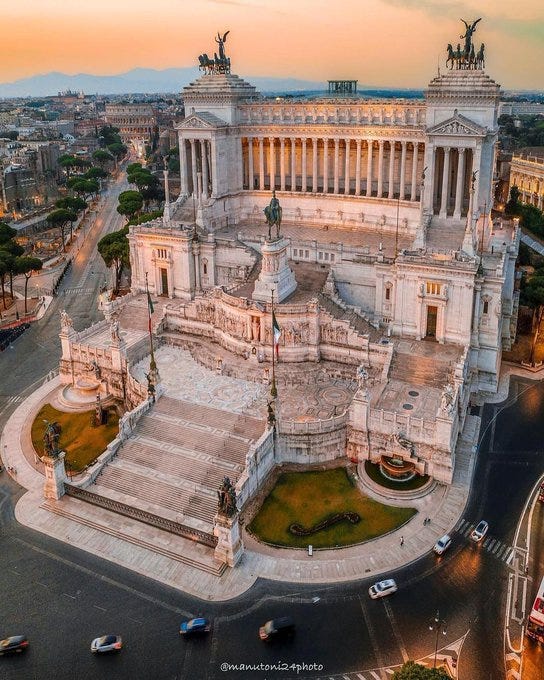
.
7. Pyramid of Cestius (12 BC)
One of the lesser known wonders of Rome. It was built as a tomb for the senator Gaius Cestius, who was impressed by the Pyramids of Meroe in Nubia (modern-day Sudan).
Originally, there were 2 pyramids in the city: one for Romulus and oneRemus, the brothers that founded Rome. Romulus’ pyramid was torn down and its marble was used to build the steps of St Peter’s Basilica.
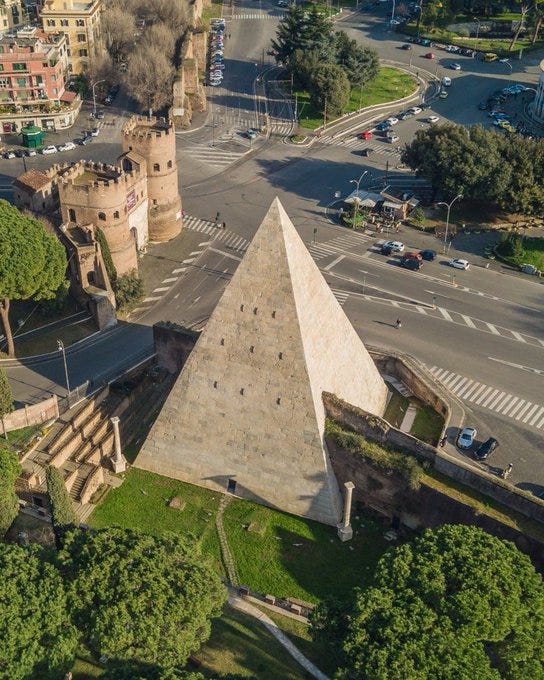
8. Borghese Gallery (1616)
Everything inside is a masterpiece of art and not just because of Bernini — look at walls and ceiling. The gallery sits inside Villa Borghese, Rome’s largest park.
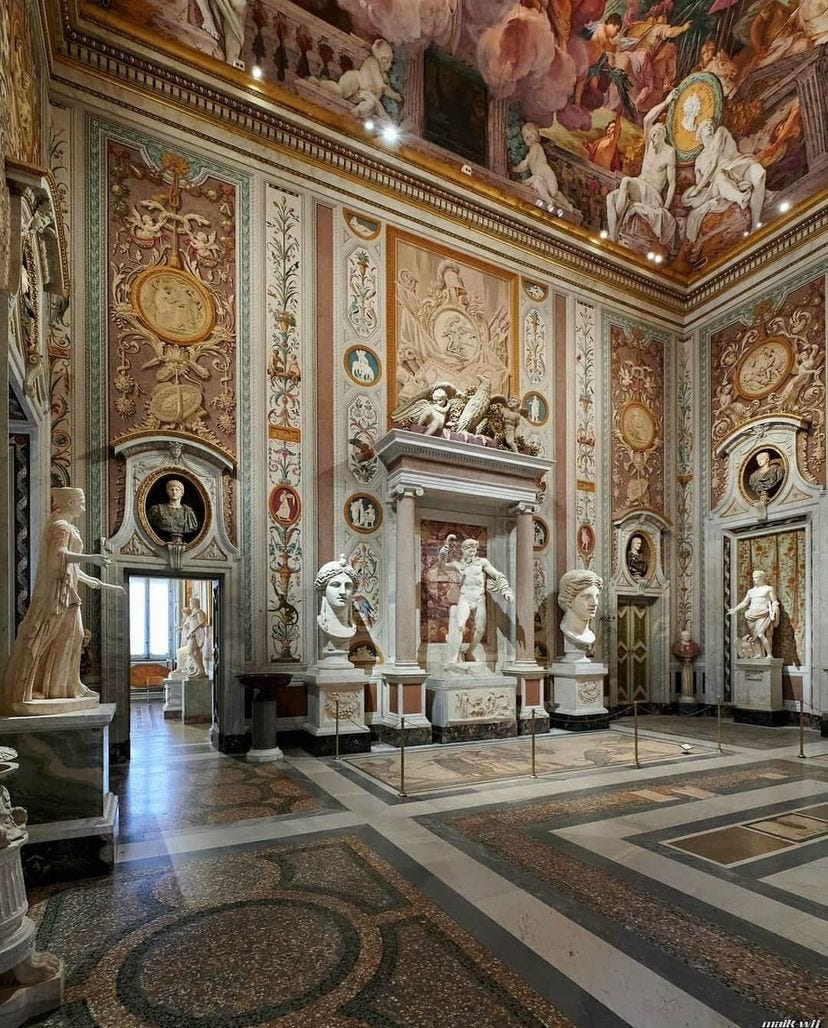
9. Vatican Museums (1506)
The Sistine Chapel is probably its most famous gallery but there are 53 others including: The Raphael Rooms and Egyptian Museum. There's also the Galof Maps that you see below.
In the Etruscan part of the museum, is where you will find the Bramante Staircase. An incredible example of the golden ratio, only being built in 1932.
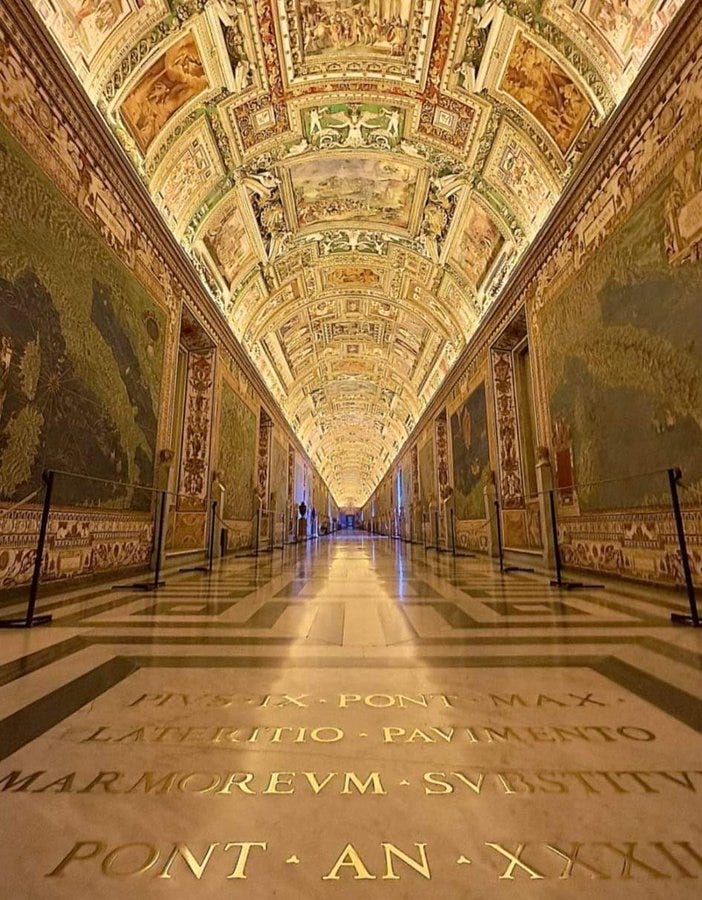
10. St Peter's Basilica (1506)
An iconic example of the Renaissance ideal of beauty, harmony and grandeur. It stands as the largest church in the world by interior measure and at the time of construction, took 120 years from start to finish
It is masterpiece within too. Michelangelo designed the gigantic 448-foot dome, with the letters on the base alone, being a staggering 2 meters tall. Undoubtedly, a true marvel.
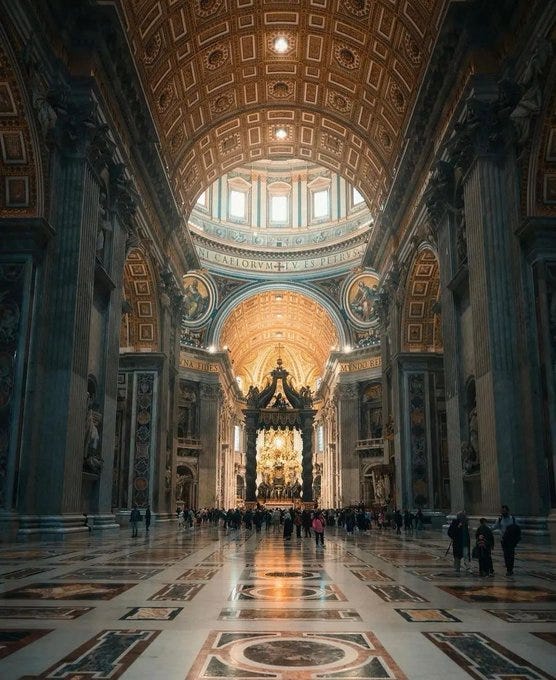
I hope that you enjoyed today’s edition.
If you want to get bonus content and help to keep the our Friday editions free for everyone, you can subscribe here!
As always, Thank You and Until Next Time,
World Scholar

P.S. Thank You for getting this far! What topic should we dive into next? Let me know directly by replying to this email!

Reply